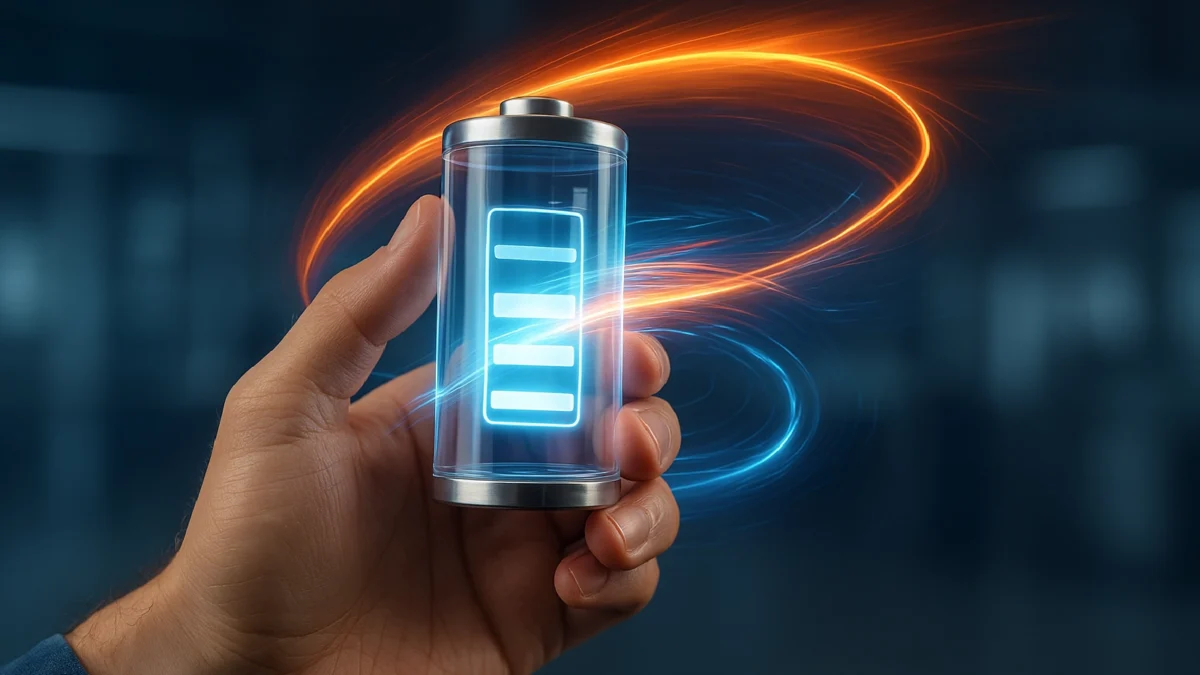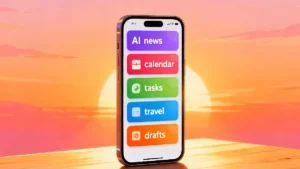They charge in seconds. They could outlast today’s best batteries by orders of magnitude. And they operate on the strangest laws in physics.
Inside the quiet scientific race to turn quantum weirdness into the fastest, most efficient energy storage humanity has ever built.
The Blink-of-an-Eye Battery
Imagine recharging your phone in the time it takes to snap your fingers — not minutes, not even seconds, but almost instantly. It sounds like science fiction, yet that’s the kind of leap scientists are chasing with quantum batteries. These futuristic devices promise something radical: energy storage systems that tap directly into the strange, counterintuitive behaviors of the quantum world.
“Quantum batteries don’t just store power — they redefine what charging can mean,” one researcher recently said.
They may still exist mostly in the lab, but the underlying physics is real — and the breakthroughs are piling up fast.
From Chemistry to Quantum Mechanics
Traditional batteries rely on chemistry. Ions move between electrodes, chemical reactions release power, and eventually, everything runs flat. Quantum batteries flip that idea completely.
Instead of chemistry, they rely on quantum mechanics — specifically the phenomena of entanglement, superposition, and coherence. Energy isn’t stored in chemical bonds but in quantum states themselves.
A landmark review in Reviews of Modern Physics explains how this approach allows collective charging, where quantum subsystems work together and charge faster as their number increases. The effect is cooperative — the whole becomes greater than the sum of its parts.
It’s as if thousands of tiny quantum “cells” can synchronize perfectly, absorbing energy almost instantaneously.
Why Quantum Batteries Could Change Everything
So what makes this more than a physics curiosity? The potential advantages are staggering.
- Speed that defies logic
Recent experiments described by Phys.org confirmed that quantum systems can approach the quantum speed limit — the fastest possible rate at which energy can be transferred in nature. - More energy per particle
Research shared on arXiv suggests that using quantum entanglement could let each particle store more energy than any classical system could achieve. - Unprecedented stability
A prototype at RMIT University held its charge 1,000 times longer than previous models, according to IEEE Spectrum. That’s not a small tweak — it’s a new category of energy resilience. - Quantum-ready power
Because they operate on quantum principles, these batteries could directly power quantum computers, sensors, and nanomachines that need perfectly synchronized, interference-free energy sources.
“If they deliver on their promise, quantum batteries won’t just power devices — they’ll power the next era of technology.”
The Breakthroughs So Far
Until recently, quantum batteries existed purely in theory. Now, small-scale experiments are proving the physics works.
A European research team recently built a quantum battery model that actually outperformed its classical equivalent. Others working with superconducting qubits have developed charging systems that remain stable at cryogenic temperatures.
In another milestone, researchers using coupled oscillators achieved near-instantaneous energy transfer, approaching theoretical speed limits — a result featured in Popular Mechanics.
On the materials front, a broad review on PubMed Central identifies perovskites, quantum dots, and organic microcavities as potential candidates for making quantum batteries scalable and manufacturable.
These developments are the stepping stones to something remarkable: a power source that might someday make charging as instantaneous as flipping a switch.
The Hard Part: Making It Real
Of course, it’s not all smooth sailing. Quantum systems are notoriously fragile, and the smallest bit of environmental interference — heat, vibration, electromagnetic noise — can collapse the very quantum states that make these batteries work.
| Core Challenge | Why It Matters |
|---|---|
| Decoherence | The loss of quantum coherence instantly destroys stored energy. |
| Scalability | Maintaining entanglement across thousands of particles is exponentially difficult. |
| Precision | Quantum control requires timing and stability at atomic precision. |
| Material Quality | Even microscopic defects can cause massive performance drops. |
| Integration | Connecting quantum systems to classical circuits remains unsolved. |
Most of today’s prototypes operate at extremely low temperatures and on tiny scales — but each iteration brings better control and longer coherence times.
What the Future Might Look Like
If quantum batteries make it out of the lab, their applications could be transformative:
- Instant power for quantum computers and sensors
- Medical implants and nano-devices that recharge internally without heat or waste
- Micro-grids capable of storing renewable energy almost instantly
- Even consumer electronics that could charge in seconds rather than hours
Realistically, commercial versions are still a decade or more away. But the trajectory feels familiar — just like how the first transistors or lithium-ion cells once seemed like niche scientific curiosities before transforming the world.
The Bigger Picture
Quantum batteries aren’t just about faster charging. They represent a deeper shift — a move toward technologies that use the very foundations of quantum physics as engineering tools. They hint at a future where energy isn’t just stored in matter, but in the fundamental properties of the universe itself.
It’s rare for a new technology to feel both wildly futuristic and scientifically sound. Quantum batteries somehow manage both. They may still be fragile, experimental, and a little mysterious, but if researchers can tame them, they could redefine what “charged” even means.
Last Updated on October 18, 2025 by Lucy



